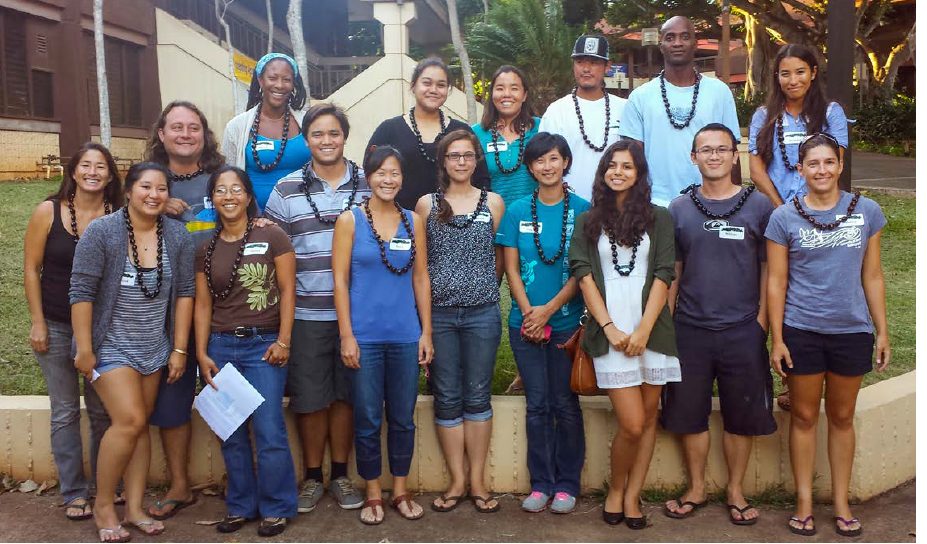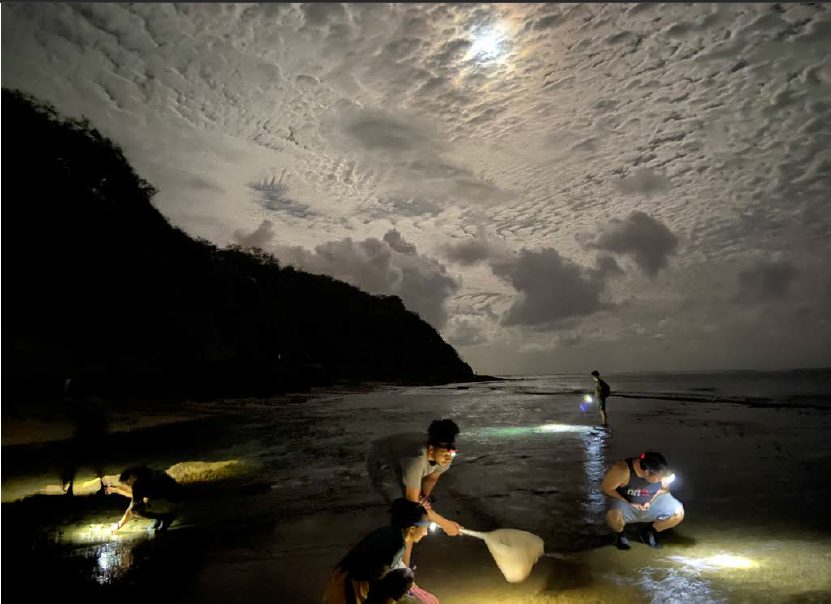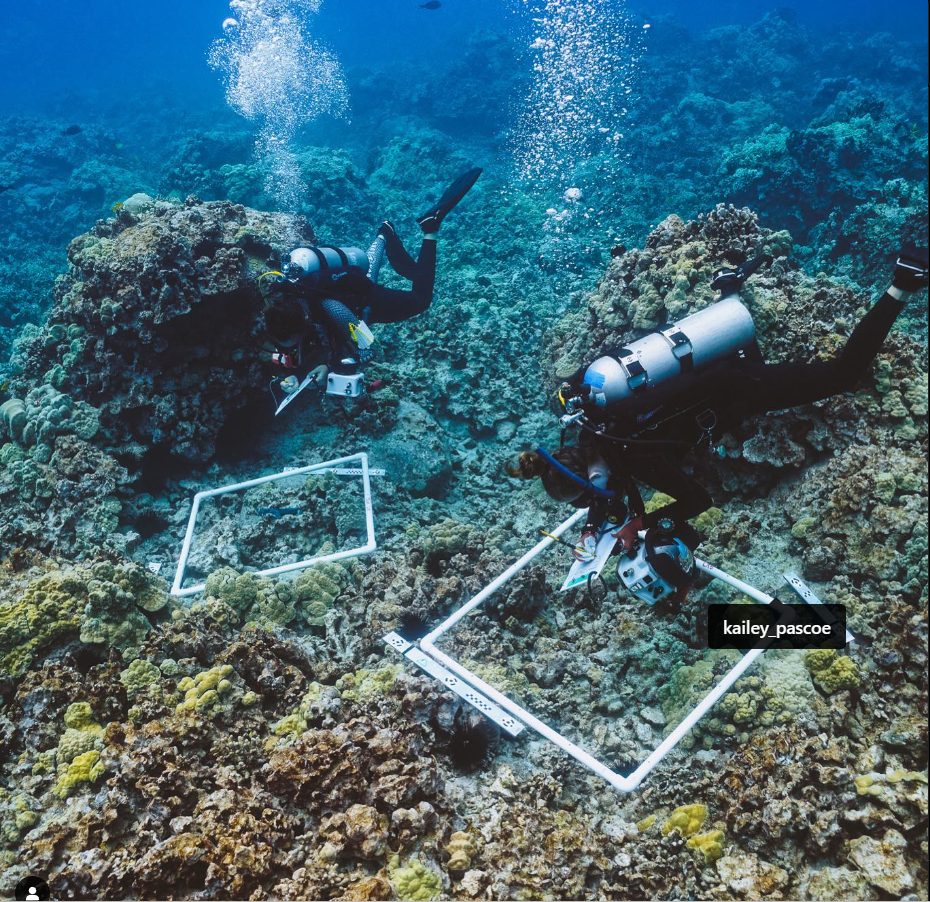Within the Department of Ocean and Earth Sciences and Technologies at the University of Hawaii, numerous programs have been carried out to strengthen the presence and appeal of oceanographic and geological sciences among young people from indigenous Pacific Island and Hawaiian communities. An article published in December in the journal Oceanography summarizes these various educational initiatives, carried out in a university context where native Hawaiians and Pacific Islanders are still largely in the minority.
by Maud Lénée-Corrèze
Cloudbreak is one of the world’s largest surfing waves, located near Tavarua Island in Fiji. While Nukurukurumailani (its Fijian name) is well known in the surfing community, the 5,000-square-meter coral reef on which it forms is relatively unknown. Or at least it used to be.
Because a team of scientists from native Hawaiian communities working at the School of Ocean and Earth Sciences and Technologies (SOEST) at the University of Hawai’i a Mānoa (UHM) has set itself the goal of mapping the large coral reefs of the Pacific Islands, starting with those beneath the biggest surfing waves. This research program, conducted within the University of Hawaii’s Mega Lab (Multiscale environmental graphical analysis laboratory), aims to explore new ways of doing science that include the native Hawaiians. The first positive results of this initiative were summarized in a paper published at the end of December 2023 in the journal Oceanography, which this month focused on the place of minorities in oceanographic science.

First class of students supported by the Maile tutoring program, initiated in 2013 by Rosanna ‘Anolani Alegado © Haunani Kane
Working closely with the local surfers’ association, the public administration and a resort on the island of Tavarua, the Hawaiian researchers, who are themselves fans of the sport, are trying to understand how the health, structure and evolution of the corals influence the formation of this wave. The team will then produce three-dimensional models of the corals to study the chemical and geophysical impacts that affect them in a context of ocean acidification.
“In addition to the scientific interest of the project, the aim is also to include the surfing community, to raise their awareness of the need to protect their environment,” explains Haunani Kane, a coastal and island geologist at UHM, who is also the first author of the scientific article in Oceanography. Kane is the first Native Hawaiian woman to earn a PhD in geosciences. She studies the coastal risks associated with rising sea levels and the resilience of the Hawaiian and Pacific islands, from the perspective of environmental, community and cultural protection.
STORYTELLING TO TELL THE SCIENCE STORY
In 2021, the team had already delivered a map of the corals living beneath The Banzai Pipeline wave (Hawaii). Teaming up with a footwear brand, Reef Footwear, the researchers have created a story-telling narrative around the scientific method and the work carried out on the two coral reefs. It’s a marketing method,” explains Haunani Kane. Usually, investors in scientific research don’t support this kind of commercial strategy, but we think it can increase the reach of scientific communication and the inclusion of local populations.”
A marketing and media campaign was thus conducted to explain the concepts of indigenous research and underwater photogrammetry (a process designed to obtain a three-dimensional view of a site from photographs) to the surfing community. A twenty-minute documentary, shown at several festivals and totalling over 340,000 views, retraces the entire initiative.

The Maile program also organizes activities linked to Hawaiian culture, such as this trip to observe the intertidal zone during a full moon in March 2021. The lunar calendar is very important in Hawaiian culture for fishing, farming and travel on the high seas © Haunani Kane
This was one of the first major projects of this kind for Mega Lab, a research laboratory set up in 2018 on the faculty of UHM in Hilo, a city located on the island of Hawaii, by Haunani Kane and colleagues from indigenous Hawaiian communities. This research unit is dedicated to the inclusion of indigenous populations in oceanography and marine geosciences, encouraging young people to embark on scientific careers. This is not necessarily a given for the ethnic groups of the Pacific Islands (from Samoa to New Caledonia, including French Polynesia, Nauru, Wallis and Futuna, and the Solomon Islands) and Hawaii (also known as Native Hawaiian and Pacific Islanders, NHPI). As the paper published in Oceanography recalls, at the University of Hawaii, in the Department of Ocean and Earth Sciences (SOEST), according to figures from 2021, 6 percent of students identify themselves as indigenous.
However, “our people have always been linked to the ocean; our ancestors traveled the seas to reach other islands where they could settle, or to look for food,” says Haunani Kane. They sailed thousands of kilometers, without a sextant, using only the stars, sometimes over vast distances. We have inherited a lot of this knowledge, this science accumulated by our ancestors. Long before the Europeans, they developed efficient marine resource management systems, aware of their importance for survival, based on their knowledge of the species and linked to their myths and beliefs. For example, ahupu’a, a Hawaiian management system based on the division of parcels of land, and rāhui, in Polynesia (the establishment of a highly protected zone where fishing is prohibited for a given period) are very ancient management systems.
A DISTRUST OF WESTERN SCIENCE
According to the authors, the discrepancy between the low level of representation of the indigenous peoples of the Pacific Islands in universities and their very real scientific knowledge can be explained by the colonisation to which these peoples were subjected. Since the arrival of the first Europeans in the 15th century, their science and knowledge have been ignored or denigrated. This difficulty in recognising the value of the knowledge of indigenous communities continues to this day. On the indigenous side, there is a kind of mistrust of Western science. Rosanna ‘Anolani Alegado, a microbial oceanographer at the University of Hawaii and co-author of the paper, says: “The memory of using science to justify colonisation and nuclear testing in the Pacific still lingers. This doesn’t necessarily make native islanders want to embark on a scientific career in oceanography.
So how do you combine culture and science, how do you reconcile indigenous identity with being a scientist for indigenous students? This is another question that Haunani Kane and her Mega Lab have tried to answer through a research project conducted on a sacred territory in Hawaiian culture, the Papahānaumokuākea Marine National Monument, a vast marine protected area covering around 2,170 kilometres and made up of small islands, atolls and underwater mountains. Hawaiians refer to it as the realm of Pō, a revered space for the creation of life, and abode of the gods. “For the students, it was really important to go to this sacred place in our culture, as a way of reconnecting with ancestral beliefs,” says Haunani Kane.

Working on the reconstruction of underwater ecosystems damaged by a hurricane, the team respected cultural protocols, combining them with research methods. Each day began and ended with ritual chants of intentions and offerings. In addition, in order to revive the spirit of travel specific to Pacific cultures, they travelled there by sailboat, inspired by traditional Hawaiian ways of sailing, sharing the tasks on board (fishing, cooking, ship maintenance).
The Mega Lab programmes are part of a series of projects run by the University of Hawaii for indigenous students, such as the tutoring programme set up in 2013 by Rosanna ‘Anolani Alegado, which was originally aimed at indigenous students to help them feel more at ease. Although the figure of 6 per cent NHPI students at SOEST by 2021 suggests that efforts need to continue, things are moving slowly.
“I think it would be a good idea to develop partnerships with other higher education institutions in the Pacific Islands,” says Rosanna ‘Anolani Alegado. For example, we have made contact with the communities of Teahupo’o (Tahiti, French Polynesia), who are opposed to the project to build a concrete Olympic stadium on an entire area of threatened coral reefs,” adds Haunani Kane. We want to go there to study the corals and support their fight.
